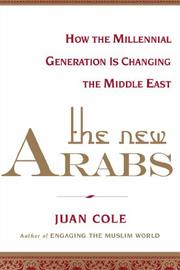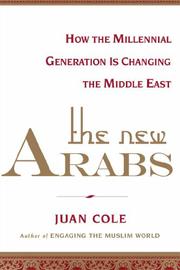By Juan Cole | (Informed Comment) | – –
A frequently met-with Western political and often journalistic narrative of the 2011 youth revolts in the Arab world is that idealistic young people came out into the streets and managed to overthrow four dictators, but then the essential Arab nature (violent, fanatical, tribal and sectarian) came out and derailed any move toward democracy. The Arabs then fell back into dictatorship or spiraled down into civil war. In other words, the revolts were about democratization and the WOGs just aren’t up to it because of flaws in national character.
Social scientists don’t think there is something peculiar about Arabs. Rather, they do big studies of lots of instances of countries moving from authoritarian to more democratic forms of government and try to discover the (non-racial) reasons for failure and success. They’ve put their finger on some important correlates.
Larry Diamond points to an acceleration of the breakdown of democracy since 2006, after the four-decade “3rd wave” in which the number of democracies tended to increase and human and civil rights improved. But since 2006, not only have a lot of democracies regressed toward authoritarianism but the rate at which they are doing so has increased. In short, the Arab world’s regressions are not unusual in the contemporary world. One thinks about the excitement about post-Soviet eastern Europe, and how disappointing Hungary and even Poland are, not to mention Ukraine.
Adam Przeworski finds a strong correlation between successful democratic transitions and relatively high per capita income. Conversely, such attempts to move from dictatorship to more open forms of governance have a high rate of failure in poor countries. For twenty years Mali was extolled as one of Africa’s rare democratic successes. Then in 2012 abruptly democracy ended in Mali and the country fell to pieces. The country’s nominal per capita annual income is $672, so the odds were always stacked against it.
The nominal per capita income of the countries where there were significant 2011 youth revolts are as follows:
Bahrain $23,899
Libya $4,745
Tunisia $3,985
Egypt $3,436
Morocco $3,077
Syria $1,821
Yemen $1,235
These countries just weren’t very promising candidates for democratization, with the exception of Bahrain. Of the non-Gulf countries where there were substantial demonstrations, Libya had the highest per capita income. But it was an oil state and most of the oil income went to the Gaddafi family and the state bourgeoisie. Dividing it by the 6.5 million Libyans is silly. Ordinary people in Libya, especially in the east, were often not well off. When I was there in 2012 I was shocked at how little it looked like an oil state. Benghazi isn’t as nice as Amman in Jordan, and Jordan has very little income.
Syria and Yemen are poorer than Vietnam and Uzbekistan, neither a beacon of democracy. Tunisia, Egypt and Morocco are poorer than Belarus, Thailand and Iran, all authoritarian states.
Bahrain failed despite its income because the Sunni Arab monarchy and elite could not make a bargain with the Shiite majority. Factions within the nation have to be able to trust one another in order to risk having an election. Moreover, the oil wealth isn’t exactly equitably shared with the Shiite peasants.
Related book:
The New Arabs: How the Millennial Generation is Changing the Middle East

Some poor countries manage to keep having regular elections– India is the most significant example here. But it has a long tradition of elections going back to the early twentieth century and one of its main political parties, which still has substantial grassroots, i.e. Congress, was founded in the 19th century. No Arab country has a parliamentary party with a continuous history of campaigning and grassroots organizing at all analogous to Congress. (Egypt only had one party from the 1950s through the 1970s, the Nasserist “Rally.” Syria only really has had the Baath since the late 1960s. Etc.)
Not only does a low per capita income make it less likely that a transition to democracy will be successful, but Diamond points out that where the economy turns down during the transition, that raises the chances of failure.
The economy turned down in all the Arab revolt countries in 2011-2015 with the exception of Morocco. Tunisia and Egypt got a lot of income from tourism, which declined steeply after the revolutions. So that Tunisia managed to have a relatively successful transition despite poverty and despite a slowing economy is a testament to its people’s and its politicians’ dedication and willingness to compromise.
Another issue is the relationship of the military to the state in each of these countries.
Tunisia has almost no military, only something like 35,000 men under arms. deposed dictator Zine El Abidine Ben Ali came to power in a coup, so he kept the army small to make sure some other officer did not do that to him. The sheer smallness of Tunisia’s military and its unavailability for repression of large public gatherings is probably a major reason for its relative success in moving toward democracy.
(Adapted from Wikimedia with thanks )
Egypt’s military in contrast is enormous (some 450,000 men), and in some ways it has been in power since 1952. The 2011 overthrow of dictator Hosni Mubarak (himself a former Air Force officer) took the form of a military coup. In 2013, the Egyptian military, having watched the fundamentalist Muslim Brotherhood government adopt a whole series of unpopular policies, intervened in conjunction with massive street rallies to make a coup.
In Libya, Syria and Yemen, the military was an arm of the regime, commanded by relatives of the president for life. In each case it was deployed to crush the revolutions. The NATO intervention stopped the Gaddafi tank corps from wiping out rebellious cities such as Benghazi, but the downside is that the army collapsed when the regime did. Libya has no national army and this situation has contributed to its chaos.
In Syria the army was deployed against the people. It drove them to arm themselves and provoked a civil war.
In Yemen the overthrown president, Ali Abdullah Saleh, still had a lot of units of the military who were loyal to him. He persuaded them to ally with the Houthi rebels of Saadeh, Zaydi Shiites, to overthrow Saleh’s successor, Abed Rabbo Mansour Hadi, last year this time. An aggressive intervention against Saleh in favor of Mansour Hadi was launched by the Saudis and their allies.
In Bahrain, the army is a Sunni instrument of Sunni power.
The revolutions in the Arab world were in some part derailed by deep divisions between nationalists and religious fundamentalists. Some of the supposed sectarianism actually has this character. This struggle has been prominent in Libya, Egypt and Syria.
Finally, the right wing authoritarianism of many of the Gulf oil states, especially of Saudi Arabia, meant that they were willing to bankroll extremist authoritarian groups, whether officer corps or religious fundamentalists in preference to democrats, and were willing to pay officer corps to crush populist movements like the Muslim Brotherhood.
Looked at in the light of these social science findings, the failure of most Arab states to transition to democracy is unsurprising. Poor countries in Africa, Asia and Central America have had the same difficulties. It is nothing to do with Islam or Arabs (‘Arab’ is just a speaker of a language, not an ethnic group). It is everything to do with lack of development.
The good news is that development will eventually take place in the Arab world, and a rising standard of living will impel people to take more control over their lives. Moreover, just as 1968 in eastern Europe was a proving ground for the later Velvet Revolution, so Arab youth now have experience in mobilizing.




 © 2025 All Rights Reserved
© 2025 All Rights Reserved